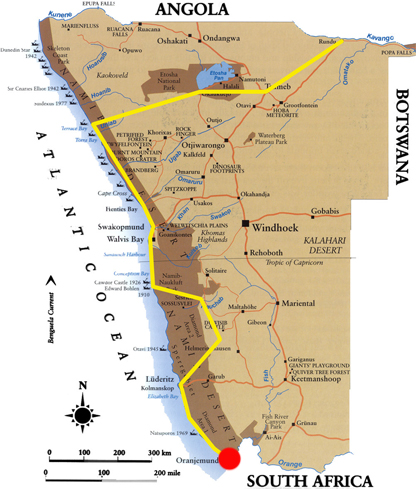AFRICAN WINGS: PART 10: ORANJEMUND TO PARYS
This is the last leg of our journey that takes us home to our hangar in Parys in the Freestate province of South Africa.
“After soaring high above the vast Namibian desert we feel blessed and privileged to be alive. We have seen landscapes that have left us breathless with their beauty, terrified at their expanse and lonely in their isolation.
There is a certain stillness you find deep inside when viewing the wild open places of Africa from above…… herds of buffalo, a lone elephant bull on an endless plain, marching dunes, dancing flamingo, the swirling and meandering Kavango and the icy Atlantic crashing onto inhospitable shores.
We were I suppose in mourning this cold dawn on the Spergebiet. When starting a journey one has space and time stretched out before you; you feel so free. As it nears an end however, you feel a sense of deep loss for that intangible thing that made you feel so incredibly alive. Thank goodness that the feeling doesn’t last long because you realise that the end of one adventure merely brings the beginning of another.
As we flew home we found ourselves in deep contemplation of what we had just experienced on our journey through the desert kingdom of Namibia. It is with all adventures that the journey happens as much within yourself as it happens outside yourself and that you find yourself irrevocably changed as a person. Albert Schweitzer once said that “as we acquire more knowledge, things do not become more comprehensible but more mysterious” and in this he is completely right. Having flown through Namibia we find her more mysterious and alluring than ever and realise that we have just scratched the surface in discovering her silent depths.
So it was with a paradoxically heavy heart and lightness of spirit that we took off from Oranjemund and headed east for the Freestate over the magestic Richtersveld and Augrabies falls.
As we flew home we found ourselves in deep contemplation of what we had just experienced on our journey through the desert kingdom of Namibia. It is with all adventures that the journey happens as much within yourself as it happens outside yourself and that you find yourself irrevocably changed as a person. Albert Schweitzer once said that “as we acquire more knowledge, things do not become more comprehensible but more mysterious” and in this he is completely right. Having flown through Namibia we find her more mysterious and alluring than ever and realise that we have just scratched the surface in discovering her silent depths.
So it was with a paradoxically heavy heart and lightness of spirit that we took off from Oranjemund and headed east for the Freestate over the magestic Richtersveld and Augrabies falls.
Jan and I like to think of ourselves as adventurers and try to live our lives as freely as possible. Sometimes it is difficult to explain in words how utterly an experience has changed you but a movie that we recently watched really comes close. 180 Degrees South: Conquerors of the Useless is a story about searching for meaning beyond adventure, and about the importance of fighting to protect natural places.
In the movie they talk about adventure a type of mediation where you get to meet aspects of yourself you normally wouldn’t. In other words its not about conquering the summit its about what you find in yourself while attempting it.
At one point, in reference to the wealthy adventurers that pay Sherpas to drag them up Everest and who pay for helicopters to drop them above the treeline, Chouinard says, “when you compromise the process; you’re an asshole when you start out, and you’re an asshole when you finish.”
Visit http://www.180south.com for more on this fantastic movie
Thank you for flying with us across this vast and magical country and we look forward to taking you with us on future adventures into the heart of Africa
Here are some photos of the scenery across the Richtersveld and Augrabies wilderness areas between Oranjemund and Uppington….






























































